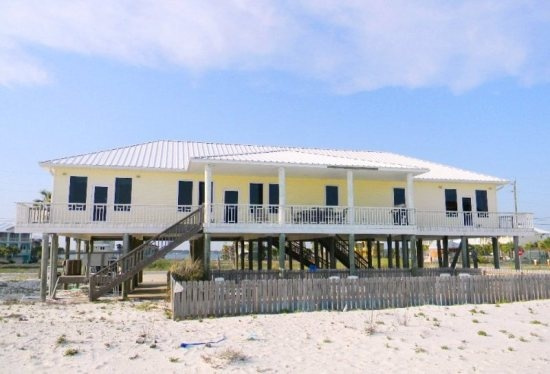At risk of taking us slightly off topic. With all the floods in the UK at the moment, a picture has been doing the rounds on twitter -
.
Which has been widely shared with comments along the lines of "This is all that is wrong with British house building.".
And it got me thinking.
If we are going to accept that the climate has changed (let's not argue that one here, lets do that over a pint in the pub), and thus accept that we are going to get more flooding, then we need to change the approach we take to building houses.
Building on the site in the above picture with traditional British house designs like the big development companies favour is a disaster waiting to happen.
But, if we change the way we build are houses, that land can be used to house people. Where perhaps it might not be suitable to many other uses.
In the wake of Hurricane Katrina people looked at the houses that had been destroyed and set about how to build a better house. One that can withstand the high winds of the deep south, and yet also stay dry when the waters rise. They came up with this:
It's raised up on stilts that provide a parking space for your car, or somewhere to sit out of the sun when it's not flooding. Yet when the water rises, you park the car else where (or just accept you're gonna lose it...), and your house stays high and dry. These homes are also designed to withstand flying debris and high winds.
An alternative approach is one used by the Dutch.
They build their homes with a basement that is an empty concrete box, rather than a foundation. They then moor the house to a post driven deep into the ground (Dutch geology means this can be upto 30m deep). When the waters rise, so does the house. it floats up and down with the waters, staying in place because of the post.
You can see the flotation basement and the central post that keeps the house in place but allows vertical movement.
Simple designs that allow us to work with the floods, not against them.
Now can you imagine the local authority planning committee approving either design? or of developers like Bovis homes paying out to build such homes?
And so volunteers as well as members of the emergency services are out risking their lives to help those hit by the floods.
Sorry, wanted to get that off my chest.
J








